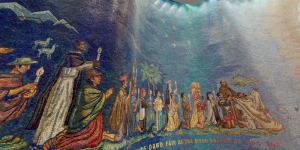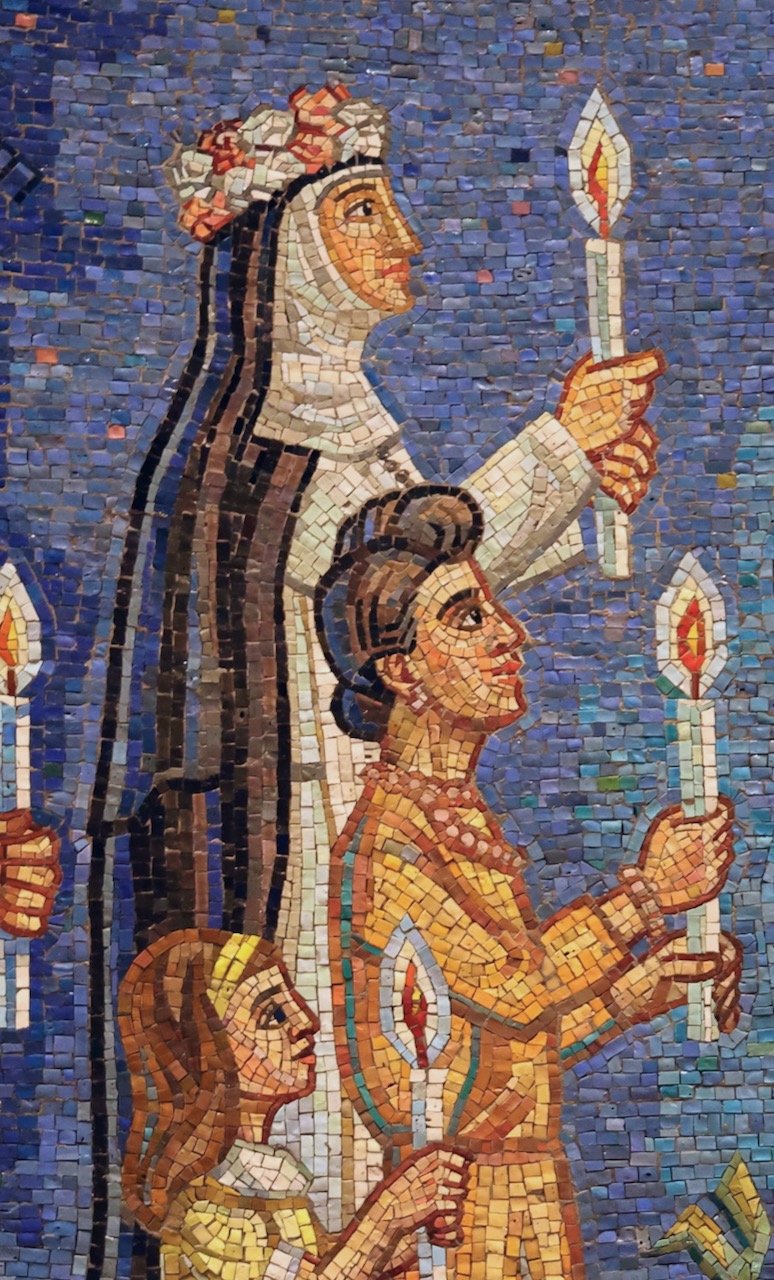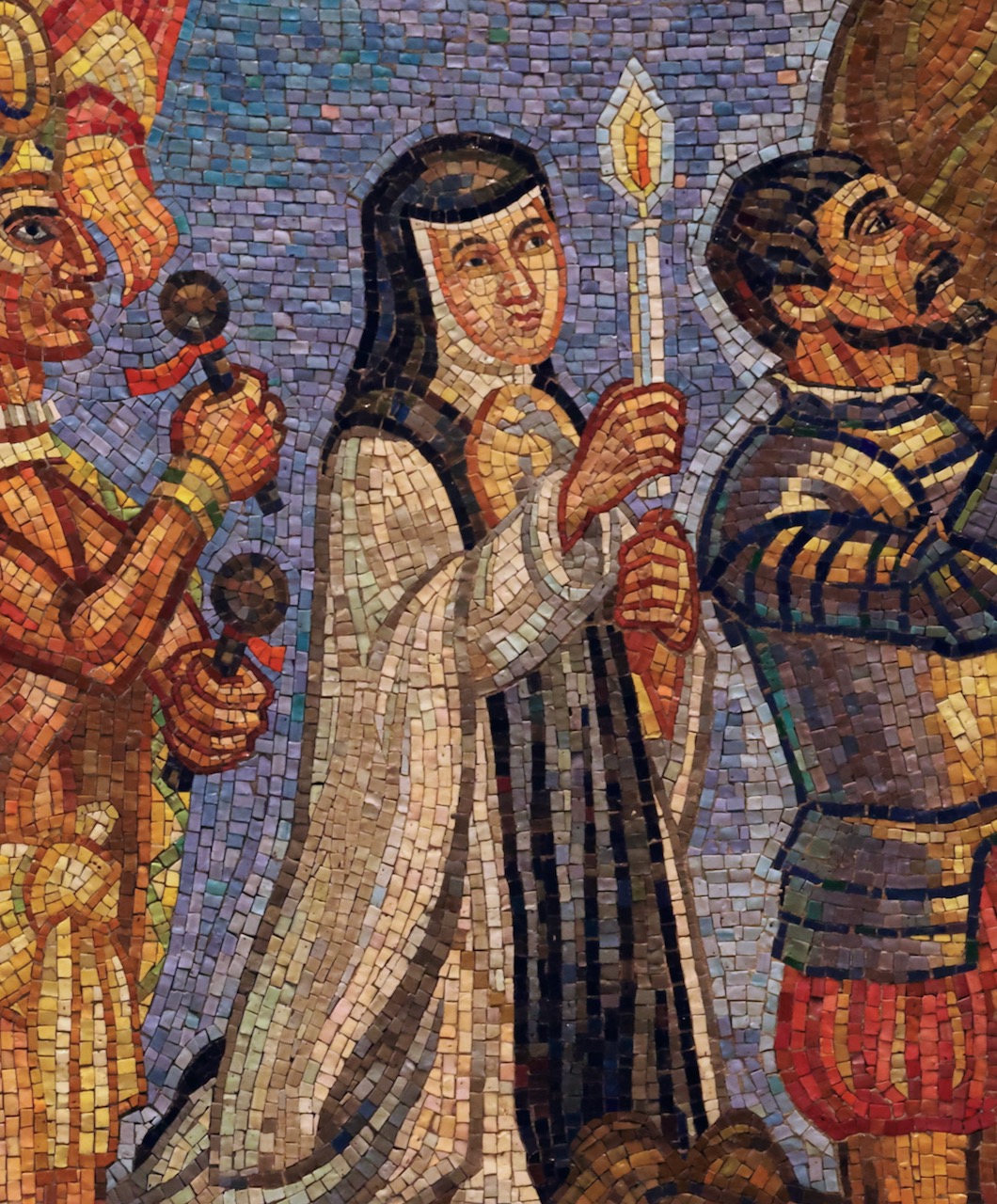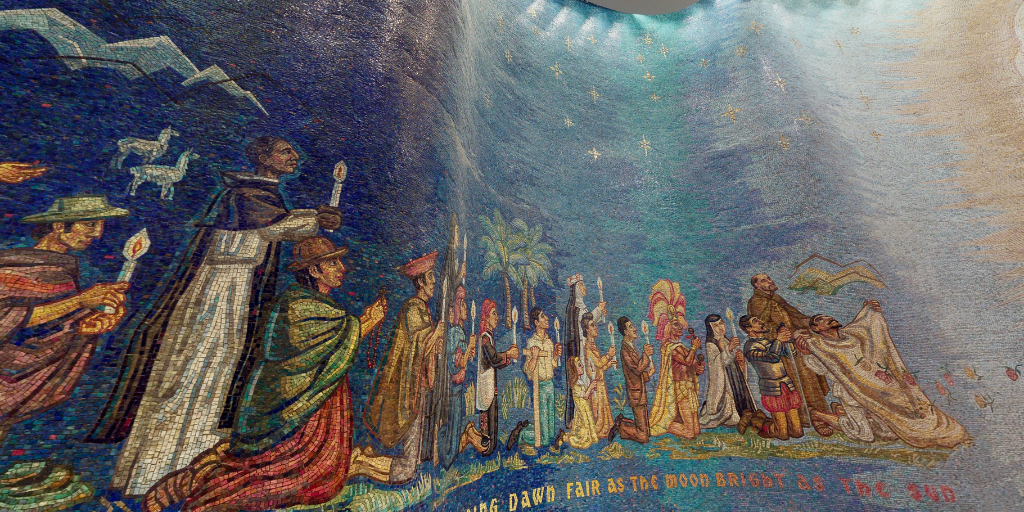
At the Basilica, the Our Lady of Guadalupe Chapel not only honors the major Marian apparition of the New World – it also portrays various significant Catholics from the history of the Americas. As we celebrate the Feast of Our Lady of Guadalupe this week, we invite you to learn about the saints and historic figures portrayed in the Our Lady of Guadalupe Chapel.
This post is part I in a series – view part II.
St. Martin de Porres
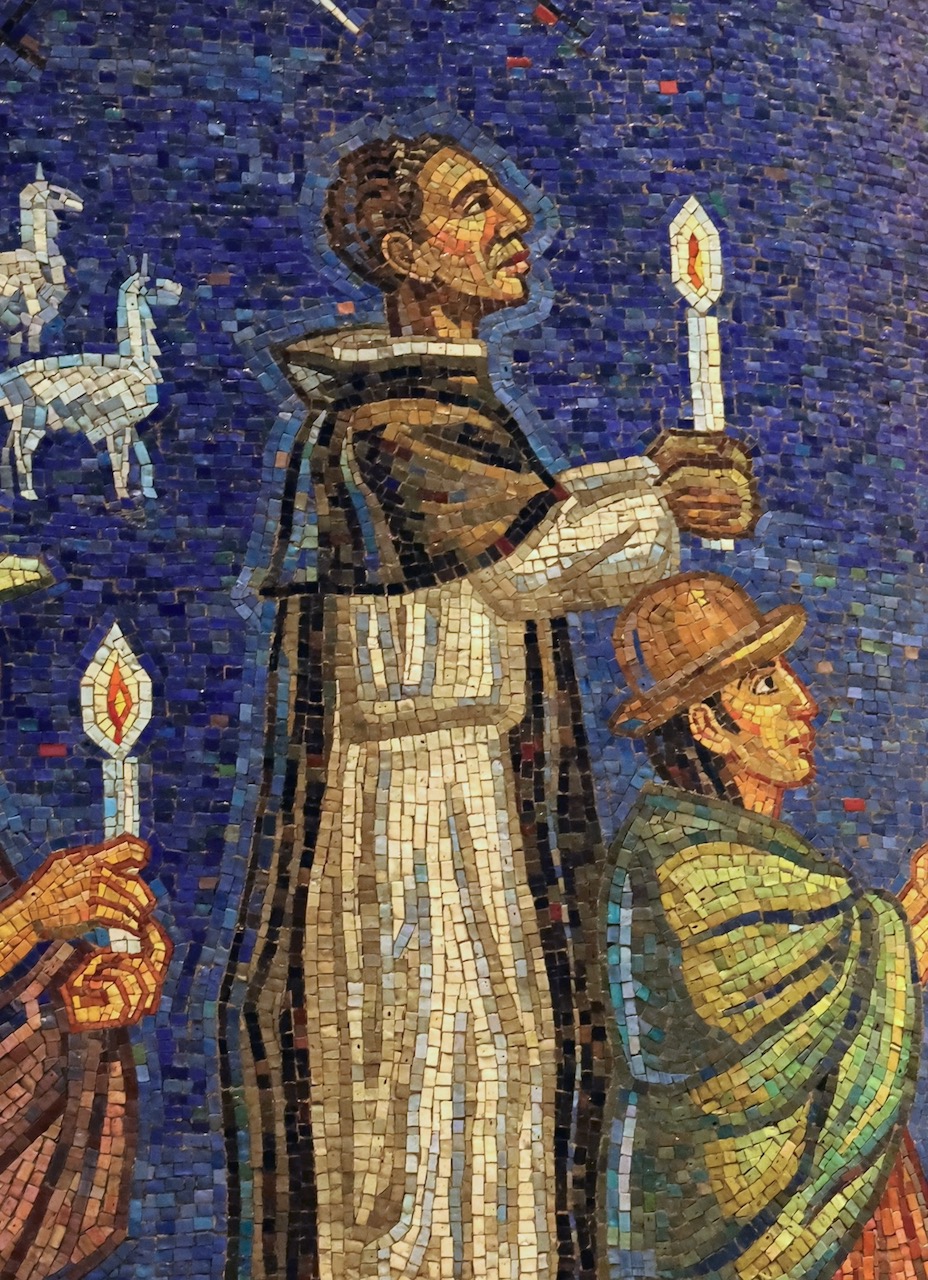 Martin de Porres was born out of wedlock in Lima in 1569, to a Spanish man and a formerly enslaved Peruvian woman. Though his father enjoyed a position of power as governor, he sought to distance himself from his mixed-race son and left his mother to raise him. When he was just 12, Martin began training to be a barber – a profession which, at the time, entailed surgical procedures such as tooth pulling and bloodletting in addition to cosmetic services! About three years later, Martin joined a Dominican monastery where he eventually served as head of the infirmary. Not only did Martin found an orphanage and a hospital for abandoned infants, but his medical services expanded to the streets of Lima, where he would pick up vagabonds and nurse them back to health. Being of African heritage himself, he also had a particular compassion for enslaved people, often fulfilling the basic needs their overseers neglected.
Martin de Porres was born out of wedlock in Lima in 1569, to a Spanish man and a formerly enslaved Peruvian woman. Though his father enjoyed a position of power as governor, he sought to distance himself from his mixed-race son and left his mother to raise him. When he was just 12, Martin began training to be a barber – a profession which, at the time, entailed surgical procedures such as tooth pulling and bloodletting in addition to cosmetic services! About three years later, Martin joined a Dominican monastery where he eventually served as head of the infirmary. Not only did Martin found an orphanage and a hospital for abandoned infants, but his medical services expanded to the streets of Lima, where he would pick up vagabonds and nurse them back to health. Being of African heritage himself, he also had a particular compassion for enslaved people, often fulfilling the basic needs their overseers neglected.
Throughout all his endeavors, Martin demonstrated the utmost love and charity, and became a lay brother of the Dominicans at the suggestion of his superiors. In addition to his work in hospitals and social justice, he also started an animal shelter at his sister’s house to care for cats and dogs. He passed away at age 60 on November 3, 1639, and was canonized in 1962.
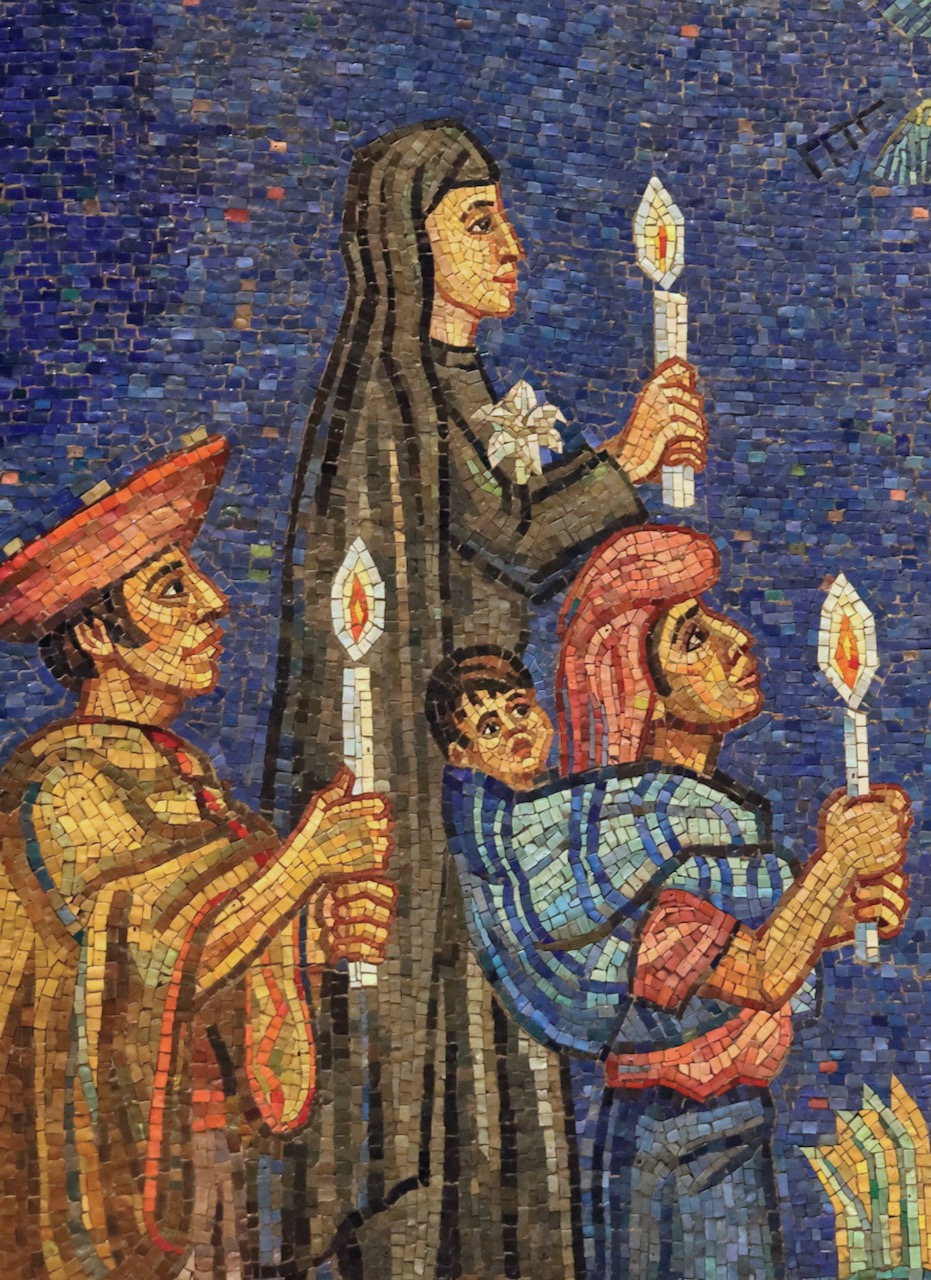
St. Mariana of Ecuador
Born in 1618, St. Mariana lost both parents at age four, and grew up under her sister’s care. Her grasp of spiritual truths was so remarkable that an exception was made to give her First Communion when she was eight. (This was prior to the lowering of the age requirements for First Communion). She bloomed into an accomplished young lady who was musical, a talented seamstress, and a lover of prayer and meditation. Today, she is known as the “Lily of Quito,” beloved for her dedication to piety and spiritual education. St. Mariana of Ecuador was the first Ecuadorian saint to be canonized.
St. Rose of Lima
Born as Isabel de Flores to Spanish parents in Peru in 1586, Rose was extraordinarily beautiful even as an infant. After losing much of their fortune in mining speculation, her parents were eager to have their beautiful daughter snatched up by a rich suitor. But while countless young men sought Rose’s affections, she eschewed them for spiritual pursuits. Despite her parents’ wishes for her to marry a rich suitor, Rose took a vow of virginity and joined the Third Order of St. Dominic. Eventually, she decided to move into a garden hut, where she dedicated herself to prayer and cared for the ill and elderly. The faithful flocked to Rose for advice, prayer, and healing, and some even credited her with saving Lima from earthquakes in the surrounding region. Rose’s life and ministry provide an example of how to love others as Christ loves us. Fondly referred to as “the New World’s first flower of holiness,” she was the first named saint in the Western Hemisphere.
Juana Inés de La Cruz
The illegitimate daughter of a Creole woman and a Spanish man, Juana Inés de la Cruz demonstrated extraordinary genius from an early age. Believed to be born around November 12, 1651, she was reading by age three, composed her own poetry at eight, and studied Latin at age nine. After spending some time at court, she eventually joined the Convent of Santa Paula of the Hieronymite order and grew a collection of 4,000+ books, musical instruments, and scientific instruments with the viceroy’s support. With her diverse intellectual and creative interests, Juana demonstrated a remarkable versatility in style and form, composing everything from love sonnets to dramas, rivaling the masters of her era.
A turning point for Juana occurred in 1690, when she critiqued a sermon of a well-known Jesuit priest, Antonio Vieira, in a private letter to the Bishop of Puebla, Manuel Fernández de Santa Cruz. The letter was released to the public, stirring up controversy, but Juana wasn’t easily dismissed. She wrote a response which historians consider the first substantive defense of a woman’s right to study. Unfortunately, this only subjected her to greater attacks which eventually led her to only lay aside her private collections and all commitments to writing and study. Tragically, she died in 1690 at 44 years old – merely four years following the publication of her response.
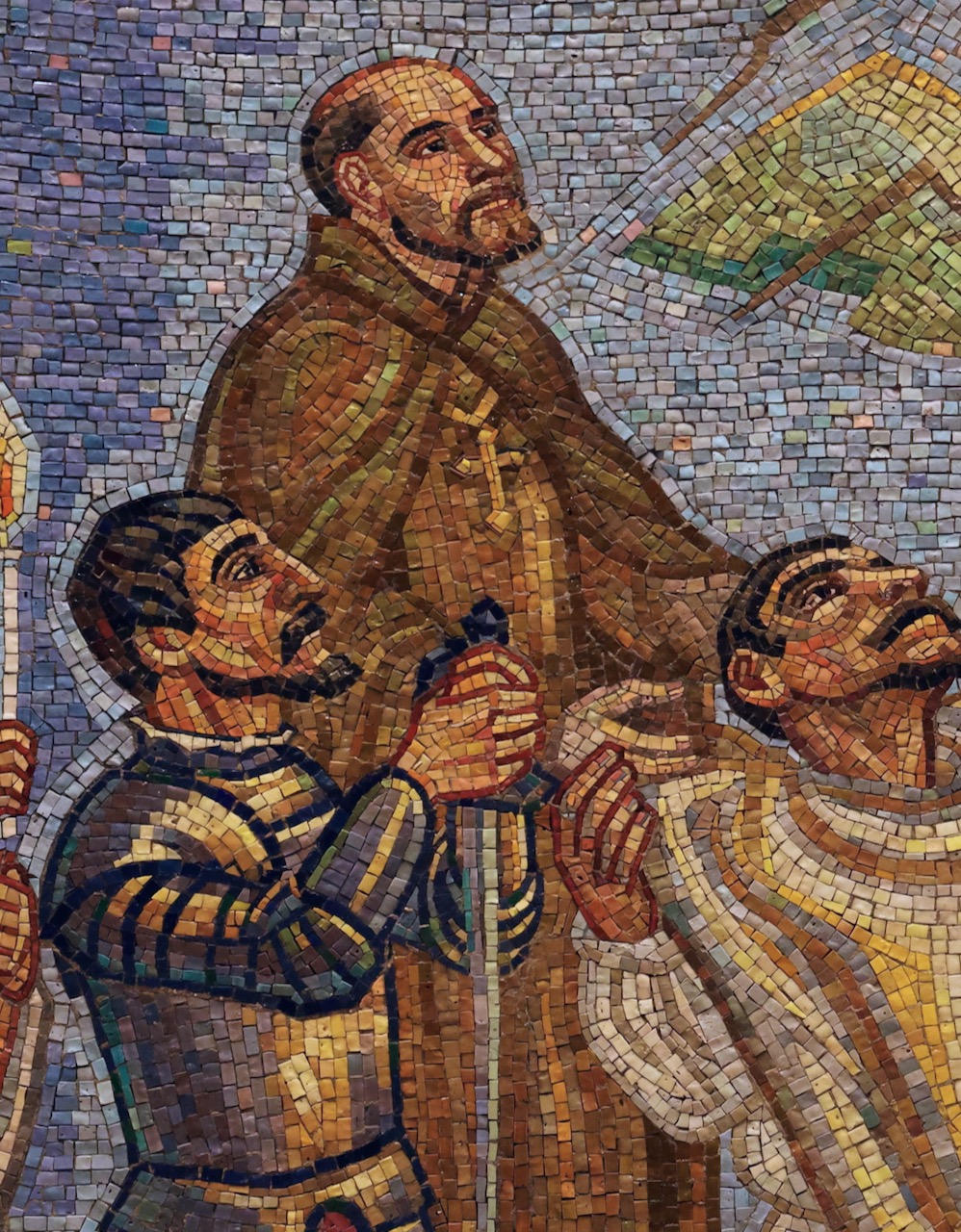
Father Juan Zumárraga
Father Juan Zumárraga was the first archbishop of Mexico, appointed as the official “Protector and Defender of the Indians” in 1528. Though Father Zumárraga is not a saint, his work to protect indigenous populations in Mexico was significant. His role as protector in New Spain was not welcomed by the auditors and magistrates of the Audiencia (the Spanish court authorities), who sought to frustrate his efforts to carry out the duties of his office, and maltreated the indigenous people. In order to inform the Spanish government of these injustices, Juan de Zumárraga embarked on a clandestine mission to Veracruz, where he passed a letter to a Basque sailor “who in turn placed it in a piece of bacon, which he put in a keg of oil.” As a result of the bacon-wrapped letter, a new Audiencia was put in place.
Sources:
Apostolic Exhortation of Pope John Paul II, The Vatican.
Butler’s Lives of Saints, ed. Bernard Bangley.
“Fray Juan de Zumárraga, Protector of the Indians,” Fidel de J. Chauvet, The Americas, Vol. 5, No. 3. (January 1949).
Rohling, Geraldine M., PhD, MAEd. The Basilica of the National Shrine of the Immaculate Conception: Guide and Tour Book. Washington, D.C.: Basilica of the National Shrine of the Immaculate Conception, 2018.
“Santa Mariana de Jesús,” EWTN.
“Sor Juana Inés de la Cruz,” Britannica.
“Sor Juana Inés de la Cruz,” National Poetry Foundation.
“Sor Juana Inés de la Cruz: The First Great Latin American Poet,” National Endowment for the Humanities.
“St. Martin de Porres,” University of Notre Dame.
“The Life of Sor Juana Inés de la Cruz: Key Years and Events,” National Endowment for the Humanities.
The Way of Saints, by Tom Cowan.
Light a Candle at the Basilica
 In honor of Our Lady of Guadalupe, we invite you to light a candle today at the National Shrine. Vigil candles burn in the chapels throughout the Great Upper Church and lower crypt level of the National Shrine. Each candle represents the faith of the supplicants and their fervent prayers entrusted to the loving intercession of the Blessed Mother.
In honor of Our Lady of Guadalupe, we invite you to light a candle today at the National Shrine. Vigil candles burn in the chapels throughout the Great Upper Church and lower crypt level of the National Shrine. Each candle represents the faith of the supplicants and their fervent prayers entrusted to the loving intercession of the Blessed Mother.

